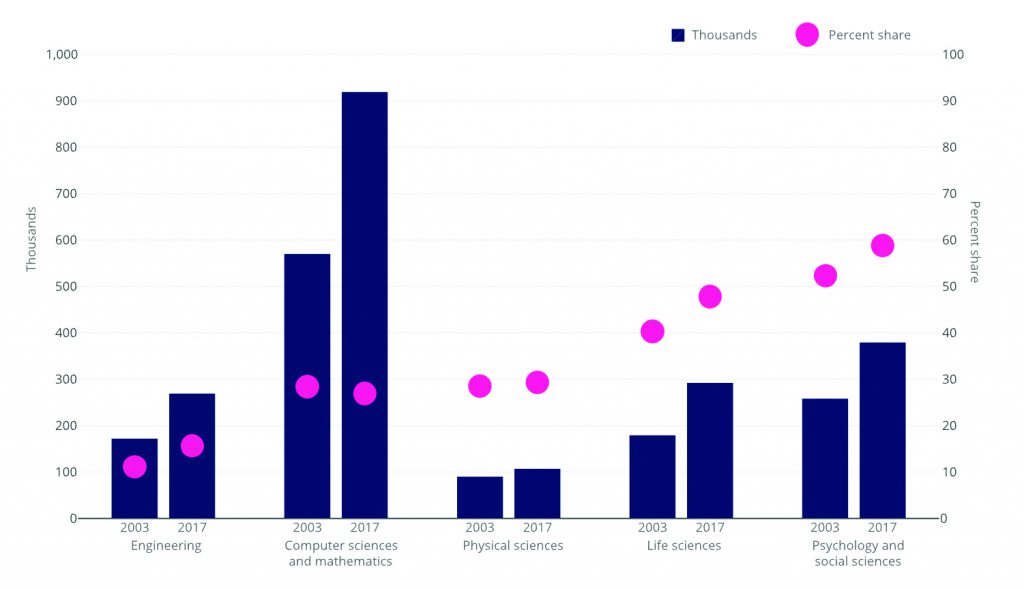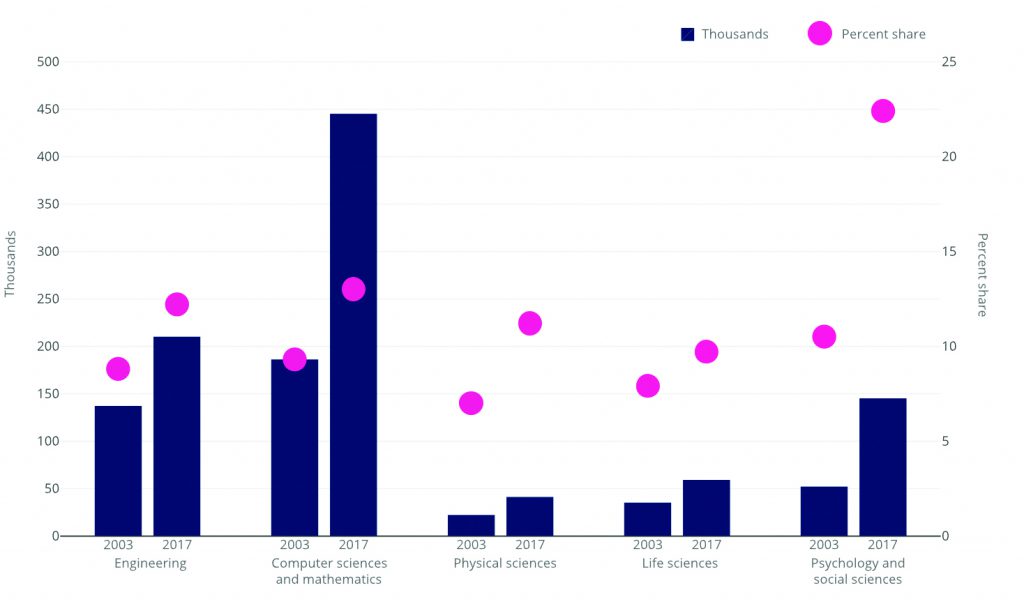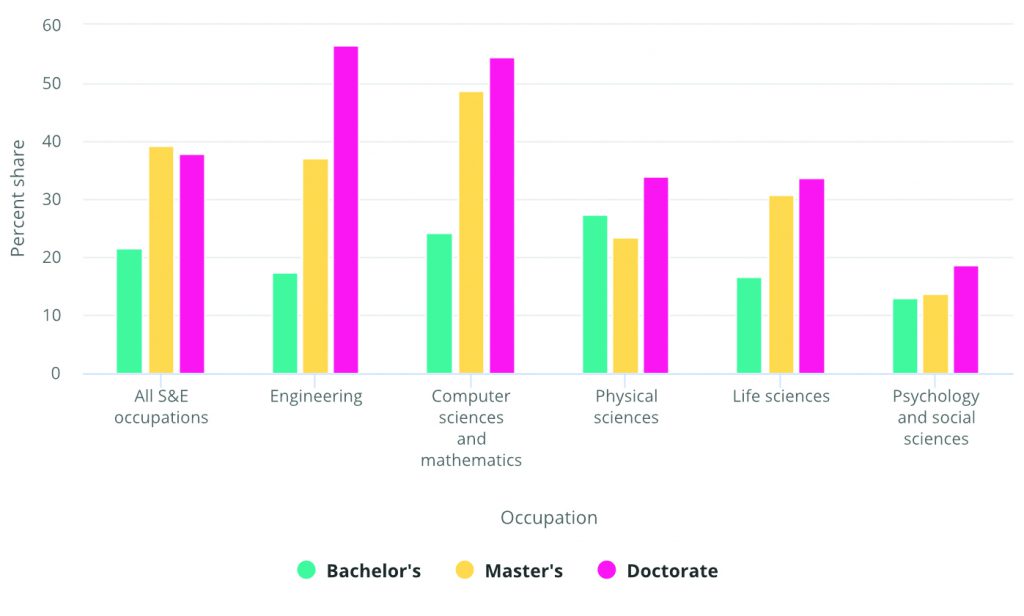NSF Report: Women, Underrepresented Minorities Gain Ground in Behavioral Science

Slowly but surely, the growing presence of women and underrepresented minorities is altering the makeup of the psychology and social-science workforce, according to the National Science Foundation’s 2020 science-indicators report.
“The State of US Science and Engineering 2020,” published by the NSF’s National Center for Science and Engineering Statistics (NCSES), analyzes a broad range of trends in science and engineering education, workforce, diversity, and public attitudes. Of special interest to psychological scientists are segments that specifically separate out psychology and the social sciences and note the participation of underrepresented groups, including women, underrepresented minorities, and individuals who were born outside of the United States.

According to NCSES, the number of women holding occupations in psychology and the social sciences in the United States has risen dramatically in recent years. In 2003, more than 250,000 women in psychology and social sciences made up just over 50% of the psychology and social-science workforce. By 2017, that number had grown to almost 400,000 women in psychology and social-science occupations, accounting for about 60% of the workforce. NCSES’s data show that more women hold careers in psychology and social science, proportionally speaking, than in any other science or engineering field.
Similar patterns can be found in the participation of underrepresented minorities in psychology and social sciences. According to NCSES, the number of underrepresented minorities in the field rose from roughly 50,000 in 2003 (approximately 11% of the workforce) to almost 150,000 in 2017 (over 22%). This increase in psychology and social sciences exceeded that of any other area of science and engineering. “The share of Hispanics among psychologists (15%)…is large relative to the Hispanic share of [science and engineering] occupations overall (7%),” according to the report.

A final observation relevant to psychological scientists concerns the percentage share of foreign-born individuals in US science and engineering occupations. In 2017, under 20% of those working in psychology and social science were born outside of the United States, a smaller percentage than in any other science and engineering field.
Highlights of other findings from the report:
- US science and engineering is responsible for the largest share of global research and development.
- The United States awards the largest number of science and engineering doctoral degrees.
- East-Southeast and South Asian countries have grown significantly in research and development spending.
- China in particular is an increasingly, heavy contributor to global spending.
- China awarded nearly 1.7 million “first university degrees”—broadly equivalent to a bachelor’s degree in the United States—in science and engineering in 2015, more than any other country. The majority of these degrees were in engineering. The United States awarded roughly 750,000 of these degrees, and France, Germany, Italy, Poland, Spain, and the United Kingdom combined offered approximately 720,000.
- France, Germany, Italy, Poland, Spain, and the United Kingdom jointly awarded more than 55,000 doctoral degrees in science and engineering in 2015; the United States awarded about 40,000. The data show that China has seen steep growth in awarding doctoral degrees, with around 34,000 offered in 2015. The report notes that in 2007, China surpassed the United States in awarding the most doctorates in the world in natural science and engineering (excluding social and behavioral sciences).

The NCSES website also includes a variety of other reports tackling topics such as perceptions of and public attitudes toward science; higher education in science and engineering; and invention, knowledge transfer, and innovation.





APS regularly opens certain online articles for discussion on our website. Effective February 2021, you must be a logged-in APS member to post comments. By posting a comment, you agree to our Community Guidelines and the display of your profile information, including your name and affiliation. Any opinions, findings, conclusions, or recommendations present in article comments are those of the writers and do not necessarily reflect the views of APS or the article’s author. For more information, please see our Community Guidelines.
Please login with your APS account to comment.